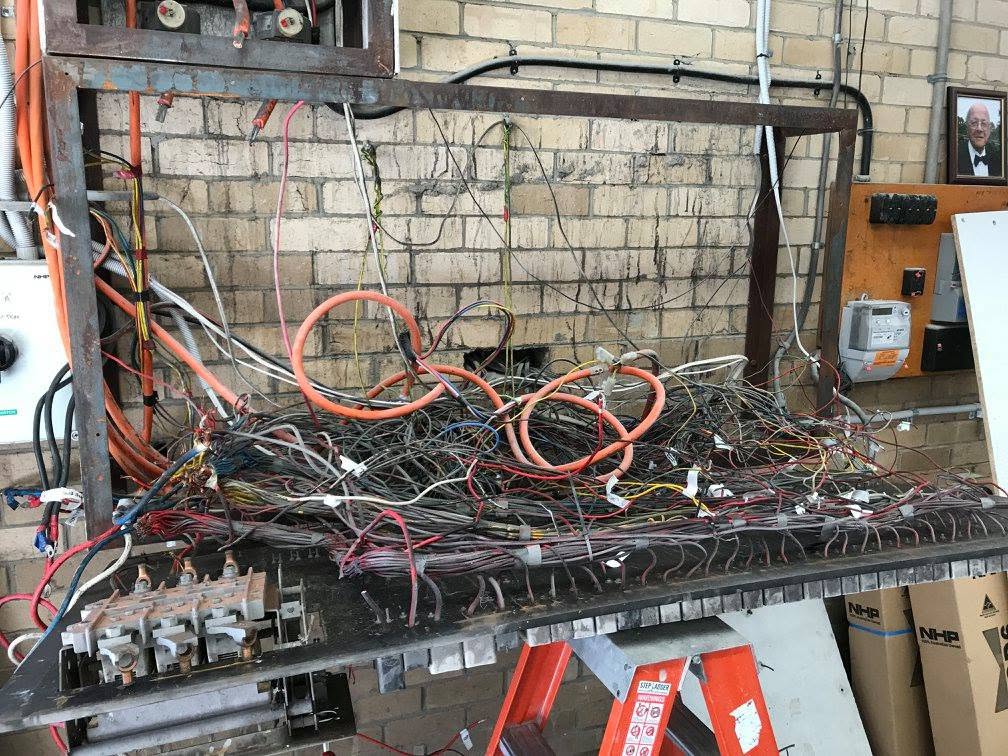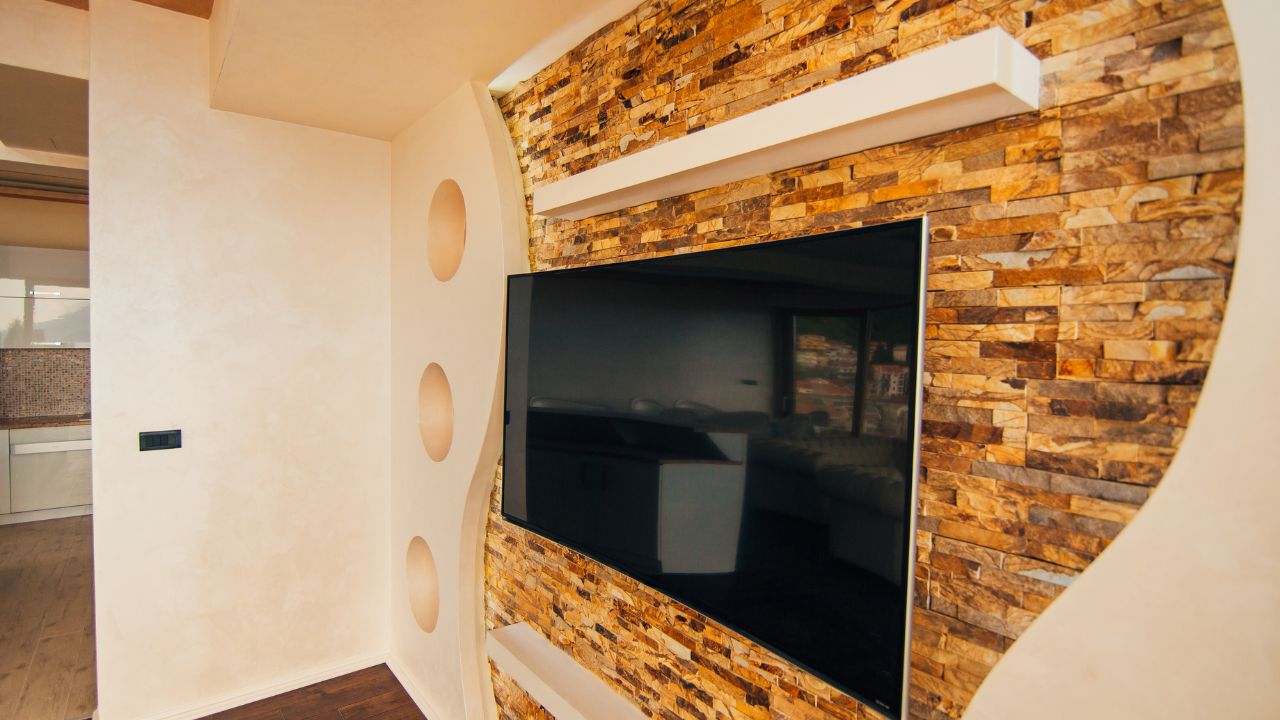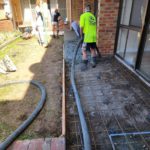Essential Insights for Moving into an Older Home
Older homes often boast unique charm and character, making them a desirable option for many buyers. However, a common issue that arises is that their electrical systems frequently require substantial upgrades or repairs. Understanding the potential challenges of these systems is crucial for effective budget planning and price negotiations during your house hunt. Being informed about the specific electrical needs of older homes can empower you to make well-rounded decisions and avoid unexpected expenses down the line.
At Direct Point Electrical, we specialise in inspecting and upgrading homes across Berwick, Narre Warren, Officer and Cranbourne. We frequently encounter a range of recurring issues that can impact your home's electrical safety and efficiency. Here’s a comprehensive guide on what to look out for and how to address these concerns early to prevent more significant complications in the future.

1. Ensure Your New Home is Equipped with Safety Switches
A fundamental requirement for any modern home is the presence of a residual current device (RCD), commonly referred to as a safety switch. These critical devices are designed to cut off the power instantly in the event of a fault, significantly reducing the risk of electrical hazards. They have been a requirement for all new circuits for many years, yet many older switchboards either lack them entirely or only have a single switch serving the entire household. Without adequate safety switches in place, even a minor fault can escalate into a serious safety risk for your family and property.
What to do:
It is essential to have your switchboard thoroughly assessed by a licensed electrician. We will identify the presence and functionality of safety switches and determine whether a complete replacement of your switchboard is necessary to enhance safety and compliance.
2. Upgrade Your Switchboard to Handle Modern Electrical Loads
Homes built several decades ago were typically wired for far fewer electrical appliances compared to today’s standards. Many did not account for the significant energy demands of modern devices such as induction cooktops and air conditioning systems, which can require more power than the entire household did in the past. As a result, outdated switchboards equipped with fuses or overloaded breakers can be both inefficient and prone to failure under the strain of contemporary electrical usage.
What to do:
We conduct a detailed assessment of your home’s electrical load requirements based on the specific appliances and layout you have. Our recommendations will focus on necessary upgrades to ensure your electrical system can adequately handle current demands, preventing nuisances such as circuit tripping and overheating.
3. Strategically Place Power Points Throughout Your Home
Many residences constructed prior to the 1990s feature an inadequate number of power points, particularly in essential areas such as kitchens, living spaces, and bedrooms. These homes were not designed to accommodate the charging of multiple devices, running entertainment systems, or having numerous appliances dispersed across benches. Furthermore, existing outlets may be in poor condition, with issues such as cracking, looseness, or improper grounding, posing a potential electrical hazard.
What to do:
We will collaborate with you to assess the layout of your home, determining the most effective locations for new power points. Our team will inspect the condition of existing outlets and ensure they are adequately protected to enhance safety and functionality.
4. Address Flickering or Dimming Lights Promptly
Flickering lights can be more than just a nuisance; they often indicate underlying issues such as poor connections, underpowered circuits, or deteriorating wiring that may not be visible at first glance. If you notice that your lights dim when other appliances are turned on, it typically signals an imbalance or inadequate wiring in the circuit designed to manage that load. This situation not only affects your comfort but can also indicate potential safety concerns.
What to do:
We offer comprehensive testing of each circuit to identify any faults or inefficiencies. Our team can often isolate the issue and provide targeted rewiring solutions only where necessary, which can save you both time and money while improving your home’s electrical performance.
5. Clarify Confusing or Unlabeled Circuit Layouts
When you open your switchboard, can you easily identify which switch controls what? Older switchboards frequently lack clear labeling, making it challenging to understand which circuits correspond to lighting, power, and fixed appliances. This lack of organisation can lead to confusion and frustration when attempting to troubleshoot faults or plan for future upgrades, potentially causing significant headaches for homeowners.
What to do:
During our inspection process, we will meticulously map and relabel your circuits, ensuring you have a clear understanding of your electrical layout. If your switchboard requires better separation of circuits, we will present you with practical options to enhance usability and safety.

6. Inspect Hidden Wiring for Age-Related Deterioration
Many older homes contain wiring that has undergone various repairs and alterations over the years. This can result in a confusing mix of old and new cables, loose junctions, or non-compliant joins that are often concealed behind walls or ceilings. These hidden issues may not be immediately apparent but can create safety risks and complicate any future electrical work that may be required.
What to do:
An extensive electrical audit will allow us to assess the condition of your cabling in critical areas throughout your home. Our approach is thorough—we don’t just guess; we test and inspect the wiring systematically. If we identify sections that require replacement, we will prioritise addressing the highest-risk areas first.
7. Prepare Your Home for Modern Technological Upgrades
If you’re considering adding features such as smart lighting, security cameras, home networking, or air conditioning, it's important to note that many older homes are not equipped to support these advancements. Often, there is insufficient allowance for low-voltage cable runs, limited space in the switchboard, and a lack of flexibility in the existing wiring system.
What to do:
When planning renovations, our team can assist in designing a comprehensive system that accommodates smart upgrades, whether you choose to implement these changes all at once or in stages over time. Ensuring your home is ready for future technologies will enhance your living experience and increase the value of your property.

Don’t Let Electrical Concerns Surprise You After Moving In
Just as you wouldn’t purchase a home without thoroughly inspecting the roof, it’s equally important to give the wiring the same careful consideration. The most reliable way to ensure your safety and peace of mind when moving into an older home is to schedule a comprehensive electrical inspection with a qualified electrician.
Our team will accompany you through the home, testing the key electrical systems, and providing a detailed report on what is functioning well, what poses risks, and what upgrades should be prioritised now versus later for optimal safety and efficiency.
Frequently Asked Questions About Electrical Inspections
Do I need to rewire the entire home?
Not necessarily. Many electrical issues can be effectively isolated and addressed one zone at a time, allowing for a more manageable approach to upgrades.
Is this information included in a standard building inspection?
Typically, no. Most building reports only examine visible components, whereas we perform thorough tests on wiring, safety switches, and overall circuit performance to ensure compliance and safety.
Can I upgrade parts of my electrical system gradually?
Absolutely. We can assist you in staging the work to align with your renovation timeline or budget constraints, ensuring a seamless transition to improved electrical safety.
What if I’m still undecided about purchasing?
A pre-purchase inspection can offer you valuable peace of mind or strengthen your negotiating position when discussing the purchase price.
Schedule an Electrical Audit Before Committing to Your New Home
Owning an older home can be incredibly rewarding, but only if the wiring behind the walls meets modern standards. Before you begin using appliances or planning extensive renovations, it’s wise to seek expert advice on your electrical setup.
Direct Point Electrical offers pre-purchase audits and tailored upgrade plans throughout Melbourne’s outer eastern suburbs. Let’s ensure your new home is equipped for modern living—safely, efficiently, and reliably.
Wiring Electrician
The Common Electrical Problems In Older Homes. Read Before You Buy A Home



I can totally relate to the excitement and apprehension that comes with moving into an older home. When my partner and I bought ours, we were drawn to the character — those high ceilings and vintage details are so hard to find in new builds! But we quickly learned that the electrical system needed a good update, which was something we hadn’t fully prepared for in our budget.
This is such a relevant topic, especially since so many people are drawn to the charm and unique characteristics of older homes. I completely agree with your emphasis on electrical systems—it’s an area that can easily be overlooked in the excitement of purchasing a new (or old) residence. There’s something undeniably special about the architectural details and the stories these homes carry, but as you rightly pointed out, their electrical systems may not have aged as well as the rest of the property.
Your insights about the challenges of moving into an older home resonate with me, especially regarding the electrical systems! When my partner and I bought an older house a couple of years ago, we quickly learned how vital it is to prioritize electrical safety. We faced issues like outdated wiring and insufficient outlets which not only impacted functionality but also our peace of mind.
It’s great to hear from someone who has walked a similar path with an older home. The journey can be challenging, especially when dealing with the electrical systems. When you realize how outdated wiring and a lack of outlets can affect your daily life, it’s a wake-up call.
I can totally relate to the challenges that come with an older home! When we moved into ours, I was excited about the character, but then reality hit when we started having flickering lights and some outlets that just wouldn’t work. It was a real eye-opener about how much attention those electrical systems needed. It’s also crazy how wiring can affect things like your home insurance and safety. I wish more first-time buyers understood those implications before diving in. Do you think there’s a checklist or must-know tips for buyers to help them avoid these pitfalls?
This post raises some essential points about the often-overlooked aspects of older homes, particularly concerning electrical systems. As someone who has navigated the potential pitfalls of purchasing an older property, I can attest to the importance of being proactive about electrical upgrades. It’s not just about functionality; it’s also about safety.
This post highlights a vital but often overlooked aspect of older homes. When my partner and I purchased an older property, we were drawn in by its character, but we quickly discovered that the electrical system was in dire need of an upgrade. Our experience taught us the importance of a thorough inspection not only for safety but also for energy efficiency.
This post highlights such a vital aspect of purchasing an older home that often goes overlooked—its electrical systems. It’s true, while many buyers are captivated by the aesthetic and historical charm of an older home, diving into its infrastructure is absolutely essential for both safety and longevity.
You bring up such an important point about the electrical systems in older homes. It’s one of those things that can easily slip through the cracks when you’re enamored with the charm or unique features of a place. I remember when I was looking at older houses, it was so tempting to just get lost in all that character, you know? High ceilings, vintage moldings, and all the quirky nooks—it’s easy to forget that a lot of that beauty might be masking some serious issues.
This is a vital topic for anyone considering purchasing an older home, and I appreciate how you’ve highlighted the often-overlooked electrical systems. Having renovated an older property myself, I can attest to the importance of thoroughly assessing these systems before making a purchase.